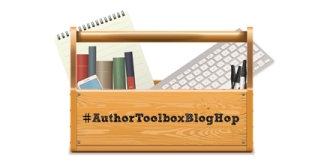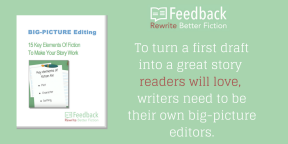 Thank you, Raimey Gallant for organizing the #AuthorToolboxBlogHop. Today is the 6th post of this new series!
Thank you, Raimey Gallant for organizing the #AuthorToolboxBlogHop. Today is the 6th post of this new series!
This is a monthly blog hop on the theme of resources/learning for authors: posts related to the craft of writing, editing, querying, marketing, publishing, blogging tips for authors, reviews of author-related products, anything that an author would find helpful.
To continue hopping through other great blogs in the monthly #AuthorToolboxBlogHop or to join, just hop on over to Ramey Gallant!
I’ll focus my entire series on self-editing. Here is what I’ve covered so far in the series:
- Why Learn To Self-Edit.
- Characters In The Context of Editing.
- Emotional Impact of Setting
- Opening A Scene
- Purpose of a Scene
Today’s topic is TENSION & CONFLICT in each scene
Tension and conflict will keep your reader engaged in every scene.
Tension is the threat of something bad happening.
Tension can be subtle or in-your-face.
Subtle Tension: Imagine one character is hiding a secret that could destroy his life and another character is about to accidentally spill the secret. The reader will feel the tension if you’ve set up the scene so that the reader knows the second character can’t keep a secret.
In-your-face Tension: A woman is thrown off a boat at sea. The tension comes if the reader cares about the character and wants her to survive. Or the tension could be she’s an evil woman who is about to destroy the world, and the reader doesn’t want her to survive.
Conflict is the fight that is actually happening. A physical fight, an argument, a battle to win a race.
Conflict can also be subtle or in-your-face action.
Subtle Conflict: Imagine a couple having dinner with friends. The wife is describing an event that happened in the past. The husband says, “Honey, that’s not what really happened.” The wife grits her teeth and smiles. She re-tells the story the way her husband wanted it told. She’s angry but hides it from others a the table. There is a silent argument going on between the couple.
In-your-face Conflict: Imagine that same couple having dinner in a restaurant. The woman knows her husband is having an affair but hasn’t let on yet that she knows. The husband’s mistress enters the restaurant, and he winks at her. The wife loses control, grabs her drink, runs at the mistress, and throws it in her face. She attacks the woman and knocks her to the ground. That is direct conflict.
Do You Have Tension or Conflict in Every Scene?
Use both conflict and tension in every scene and keep your reader engaged. You don’t need both in every scene, but you should have one in each scene. For your work in progress, review each scene and list what tension or conflict is in the scene.
How does your manuscript measure up? Are you using tension and conflict to your advantage?
Need More Self-Editing Advice?

If you’re looking for more help on self-editing download the free eBook, BIG-PICTURE Editing 15 Key Elements of Fiction To Make Your Story Work and learn how big-picture editing is all about evaluating the major components of your story. We call these components the Key Elements Of Fiction.
Our eBook shows you how to use the key elements of fiction to evaluate your story and become your own big-picture editor.
Interested In An Automated Approach To Big-Picture Self-Editing?
Why not try Fictionary?
A new online tool for serious fiction writers. Turn your first draft into a story reader love by becoming your own structural editor. Fictionary is the first web app to help fiction writers evaluate their own work with a focus on story, not words.
AVAILABLE FOR FREE TRIAL NOW 🙂
With Fictionary, you can focus on plot, character, and setting. You can evaluate on a scene-by-scene basis or on the overall novel structure. Fictionary will show you the most important structural elements to work on first.
Fictionally will guide you through the rewriting process by asking you questions specific to your manuscript, enabling you to evaluate your own story.
Fictionally helps you visualize your manuscript. Forget about yellow stickies or white boards. Fictionary will draw character arcs, provide reports on scene evaluation, and show your rewriting progress.
Happy editing and thanks for reading…


Great brief on Tension and Conflict. And it is certainly very important to evoke tension in every scene as it stokes the anticipation in the reader, ensuring that they buckle down for the ride.
LikeLiked by 1 person
Hi Lupa. So true. So many things to remember…
LikeLiked by 1 person
Excellent post, Kristina! I’m checking out Fictionary now.
LikeLiked by 1 person
Thank you!
LikeLike
Great post! Tension is so important. This is a great reminder when self-editing!
LikeLiked by 1 person
Thank you, L.M.
LikeLiked by 1 person
Way to break it down. Sometimes I find conflict too much to take. Fighting, arguments, and power struggles are not fun for me as a reader. It makes me want out, but tension seems to make me want to read on. There is a fine line–I guess. 🙂
Anna from elements of emaginette
LikeLiked by 1 person
Hi Anna, It is a fine line. The reader does need a break once in a while from too much conflict.
LikeLiked by 1 person
thanks for the tips. Lack of tension or conflict is usually the main reason a scene isn’t working and needs to be cut. For me, characters need to always want something and something else needs to be standing in their way
LikeLiked by 1 person
Hi M.L. That’s an excellent point. Characters wanting something that is difficult to get certainly adds tension, too.
LikeLiked by 1 person
Thank you so much Kristina. Tension and conflict give scenes purpose too. Fantastic post 🙂
LikeLiked by 1 person
HI Erika, Thanks for stopping by! I like that you linked tension and conflict to a scene’s purpose. That’s a smart way to review a scene.
LikeLiked by 1 person
I think I needed to read this. I think I do have both tension and conflict in every scene; it’s something I automatically do. But, it’s helpful for me to remember that tension and conflict are separate tools.
LikeLiked by 1 person
It’s remembering everything that we need to remember that’s the tough part 🙂
LikeLike
I really like that you separate both conflict and tension and further broke them down into direct and subtle. It can be easy to fall into a rut of open conflict or subtle tensions but remembering to mix them can add more dynamics to the story. Thanks!
LikeLiked by 1 person
Hi E.M.A, I usually remember to mix them when I’m revising my draft. The first time through, it’s hard to get the balance right.
LikeLike
At a recent conference I went to, they categorized tension as everyday (bad traffic, bad weather), ongoing (a failing marriage, money problems), external (plot-related), or internal (weaknesses/flaws). There are so many different kinds, but they definitely drive the story forward. They’re the engine to the story’s train 🙂
Free Writing Events Blog: http://micascottikole.com/2017/09/19/wdc17-creating-character-web-authortoolbox/
LikeLiked by 1 person
Hi Mica,
Thanks for the list. This is a great addition to the post.
LikeLike
Adding tension, either internal or external, is one of the challenges in writing a book. It takes dedication, skill, and multiple editing passes to get it right.
LikeLiked by 1 person
Hi Cheryl,
You’re so right. Multiple editing passes are key to success. Sometimes I’m glad I didn’t know what it took to write a book when I first started. I’m might have been intimidated by it, and I’m so glad I’ve come on this journey.
LikeLike
Reblogged this on Author Don Massenzio and commented:
Check out these great editing tips from Kristina Stanley’s blog.
LikeLiked by 1 person
Thank you, Don.
LikeLiked by 1 person
You’re welcome.
LikeLike
Love the way you’ve set the author toolbox bloghop posts into a series on editing. So helpful as I’m in the middle of edits on my WIP. Thanks for sharing!
LikeLiked by 1 person
I love to edit. For me it’s a very creative part of finishing a novel. That’s when I get ideas. Thanks for stopping by.
LikeLiked by 1 person
Great post, I’ll keep these points in mind when planning my scenes for NaNo 🙂
LikeLiked by 1 person
Yay. see you in Nano, Louise!
LikeLiked by 1 person
Great post! I like the breakdown and application of each and how to work them into every chapter.
I’m currently revising my chapters for conflict and tension in order to further my plot development. Your post will help me focus my revisions.
LikeLiked by 1 person
I’m so glad the post will help you, JJ. Have fun and good luck!
LikeLiked by 1 person
I’ve never heard of Fictionary and will check on it now. And the tension and conflict analysis is so true for most genre writing. Thanks for this nice post!
LikeLiked by 1 person
H JCurtis. thanks for stopping by. If you’re going to try the free trial of Fictionary, it would be great is your waited a week. We are very close to releasing the next version and are thrilled with some of the new features. You’ll get more out of a trial then. We added the new stuff based on input from writers 🙂
LikeLike
Hi! Outlining helps me so much with this. When I outline each chapter, I make sure that there is either tension or conflict 🙂
Leslie
LikeLike